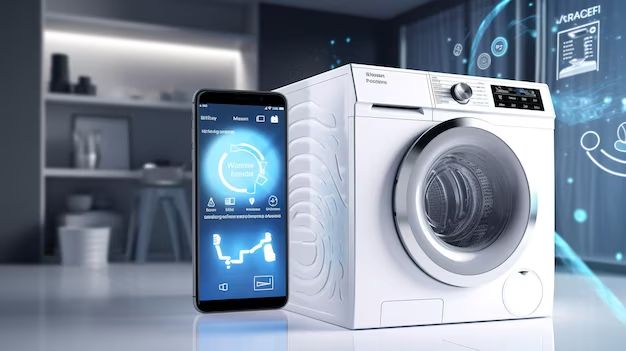When it comes to washing machine maintenance, one of the most commonly overlooked parts is the inlet screen. This small filter is located at the point where the fill hoses connect to the washer, preventing debris from entering the machine’s water valve. But if the screen becomes clogged, it can reduce water flow and cause a variety of problems. This raises an important question: are inlet screens universal, or are they specific to certain models and brands? Let’s take a closer look.
Page Contents
What is a washer inlet screen?
A washer inlet screen is a small, cylindrical filter that threads onto the end of the water fill hoses where they connect to the machine’s fill valve. It has a fine mesh screen on one end to catch any particles or sediment in the water supply before they can enter the valve. The screen unscrews from the hose for periodic cleaning.
Inlet screens serve a vital function – without them, debris buildup could damage the machine’s water valve over time. Things like sand, dirt, and mineral deposits can all pass through the water pipes and will eventually clog small openings like the valve if not filtered out. The inlet screen provides a removable first line of defense to protect the valve.
Are all inlet screens the same size?
Inlet screens come in a range of diameters, lengths, and thread sizes. The two most common sizes are standard and compact:
Standard inlet screens have a diameter of 0.625 inches (5/8″) and a length of 1.5 inches. They use garden hose threads to connect to standard 3/4″ fill hoses. This is the most common type used by major appliance brands.
Compact inlet screens measure 0.5 inches (1/2″) in diameter and 1 inch long. They connect using special compact fittings designed for newer slim-profile washing machines with space constraints.
So inlet screen dimensions are not universally standardized across all models. The screen size must match the water hose connection on a given washer. Using an improperly sized screen may prevent it from forming a tight seal or even connecting at all.
Do all washing machines use the same thread type?
The thread pattern machined into the inlet screen housing is another key factor that determines compatibility with different washing machines. There are two main thread standards used:
Garden Hose Threads – The standard thread type used for garden hoses and most inlet screens. It has a straight thread design and comes in several diameters, with 3/4″ being the most common.
British Standard Pipe Threads – A tapered thread standard occasionally found on European-made washing machines. It creates a tighter water seal but is not compatible with garden hose threads.
Again, the inlet screen threading must match the supply hoses for proper installation. If the thread patterns differ, the screen will not seal correctly. Adapter fittings can sometimes resolve thread mismatches, but a matching screen is the best solution for a secure connection.
Material Construction
Inlet screens consist of several parts:
– Plastic screen housing
– Rubber seal ring
– Mesh screen filter
The materials used for these components, especially the plastic housing, can also impact compatibility:
ABS plastic – Durable acrylonitrile butadiene styrene is the most common inlet screen housing material. It provides chemical and impact resistance.
Nylon plastic – A slippery synthetic polymer often used in compact-sized inlet screens. It creates less friction when tightening but is more prone to cracking.
Metal housings – Some inlet screens feature brass or stainless steel bodies rather than plastic. These are less prone to stripping but cost more.
Ideally, replacement inlet screens should match the OEM housing material to ensure the best fit and longevity. Combining materials like metal and plastic threads often leads to premature wear.
Are universal inlet screens available?
With multiple factors like size, threads, and materials affecting compatibility, truly universal inlet screens that fit all washing machine models do not exist. However, big box hardware stores and home centers often sell “universal” screens that fit the majority of standard North American washers. Here are their key features:
– 5/8″ diameter ABS plastic housing
– 1.5″ length
– Garden hose thread pattern
– Fine mesh screen filter
These generic inlet screens will connect securely to most conventional top-load and front-load washers. But they may not match European, Asian or compact models with different thread patterns, diameters, or plastic materials. Users should always check their owner’s manual or use the original screen as a reference when replacing inlet screens to ensure a perfect match.
DIY replacement tips
When installing a new inlet screen, keep these tips in mind:
– Check the thread pattern against the fill hoses. British Standard Pipe Threads will not seal fully with garden hose threads.
– Make sure the rubber seal is present. This compresses to block leaks.
– Hand tighten only. Over-tightening with tools can crack plastic housings.
– Use Teflon tape or pipe sealant for optimal sealing on garden hose threads.
– Ensure correct orientation. Arrows on the side indicate water flow direction.
– Flush debris after installing. Turn on taps and run a bit of water through before connecting hoses.
– Periodically clean screens. Unscrew and rinse filters under tap every 3-6 months to maintain flow.
Following these simple steps will ensure a trouble-free inlet screen replacement for optimal washing machine performance.
Conclusion
While inlet screens serve an identical function on all washing machines, their physical specifications vary across makes and models. Factors including size, thread pattern, materials, and orientations can all impact compatibility. True universal inlet screens that fit every washer do not exist – the closest alternatives are generic screens that match standard configurations. Always check specifications against the original when replacing inlet screens, and follow proper installation procedures to prevent leaks and damage. With the right match, inlet screens will provide years of reliable protection from debris clogging the machine’s valuable components.
